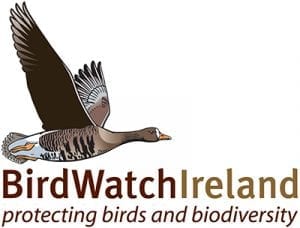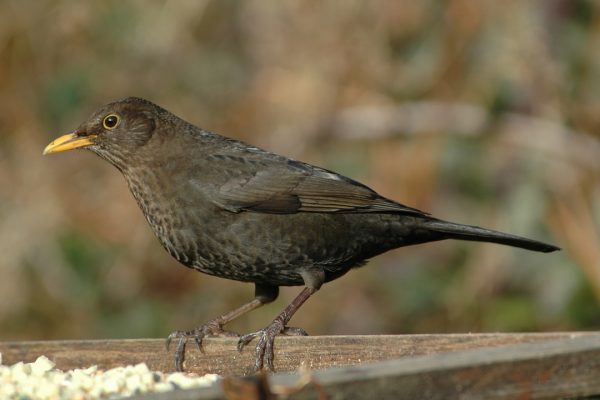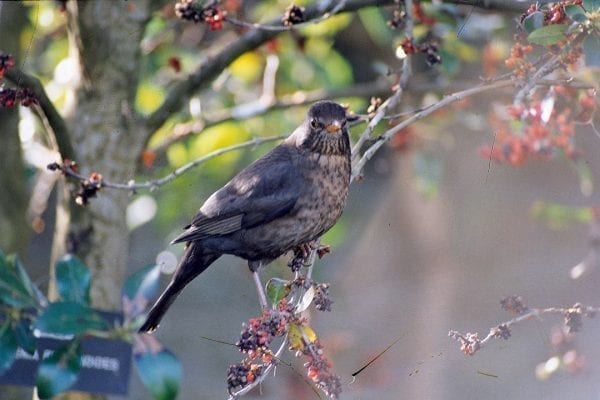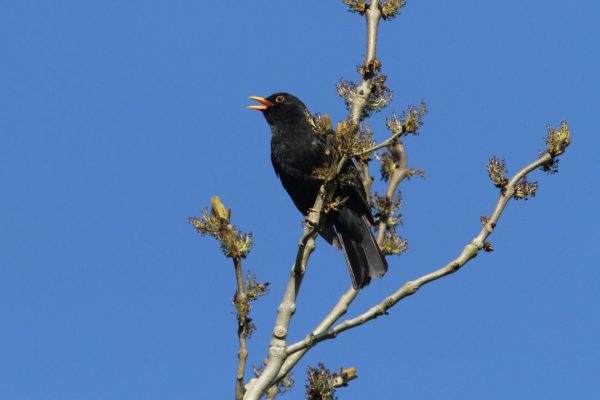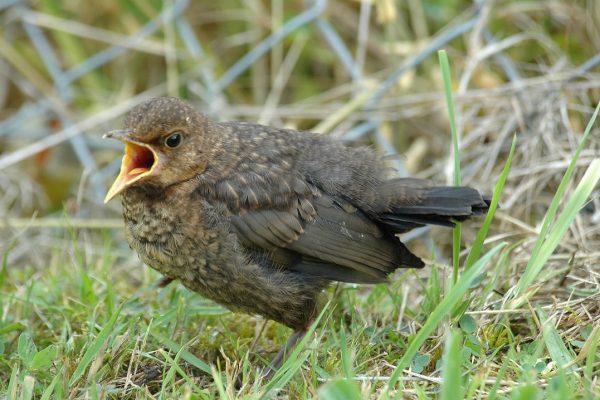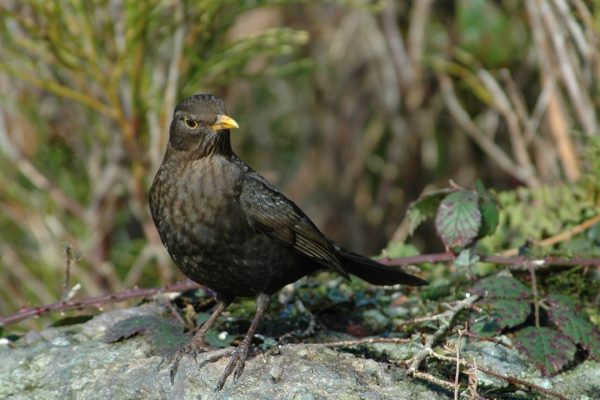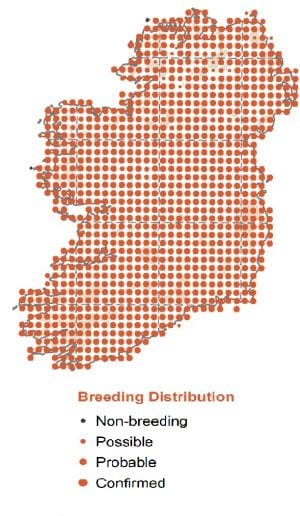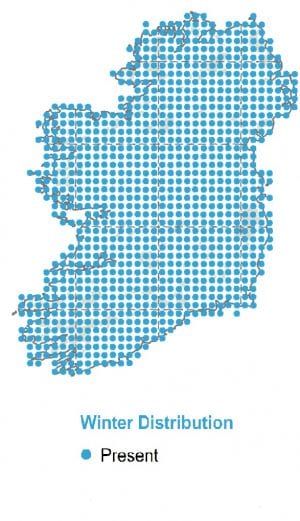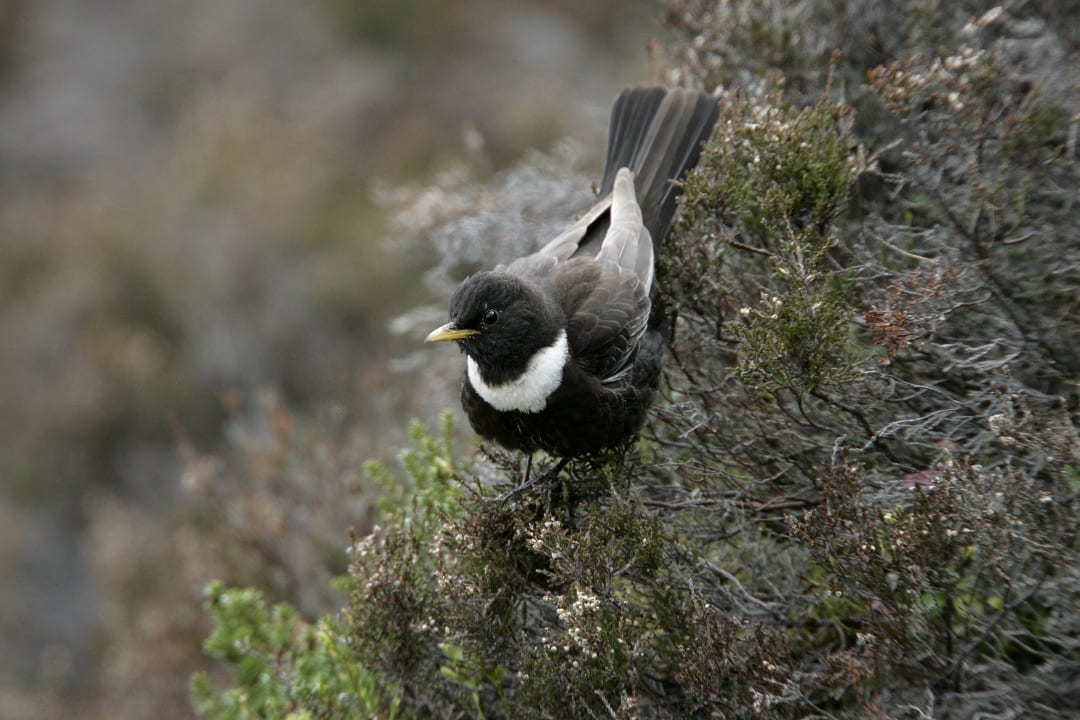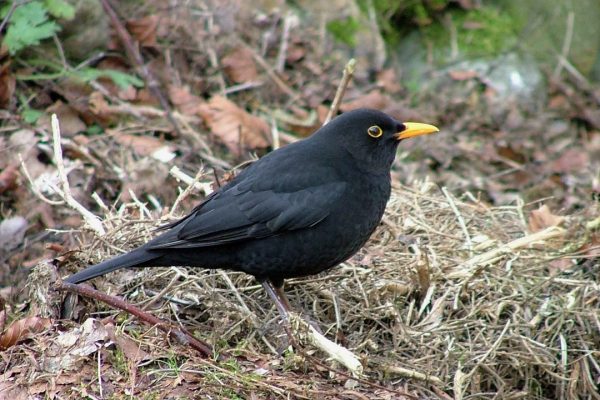
Blackbird
| Irish Name: | Lon dubh |
| Scientific name: | Turdus merula |
| Bird Family: | Thrushes |
green
Conservation status
Conservation status
Status
Resident, and winter visitor from northern and central Europe. One of Ireland's top 20 most widespread garden birds.
Identification
The commonest and most widespread member of the Thrush family In Ireland. The all black plumage and yellow bill of the male is unmistakable. However, females are much browner, with speckles on the upper breast and at first glance resemble a Song Thrush. Often cocks long tail when alarmed or when running along ground.
Voice
One of the favourite songsters. Song is rather slow, mellow and fluty, the notes ranging widely and the sound quite far-carrying. The quality of sound resembles Song thrush, but the phrases do not repeat, but ramble on continually changing slightly. Calls include an agitated "chink, chink, chink" or "chack, chack..", a whinnying horse-like cry and a thin "psew" .
Diet
Insects, especially earthworms. Also berries and other fruit including apples. Comes to bird tables.
Breeding
Breeds throughout Ireland in many different habitats - mostly in hedgerows and gardens. Nest in trees or bushes - especially brambles and ivy, but also conifers. Will use large open-fronted nestboxes.
Wintering
Irish breeders are largely sedentary. Migrants from the Continent arrive in autumn.
Monitored by
Blog posts about this bird
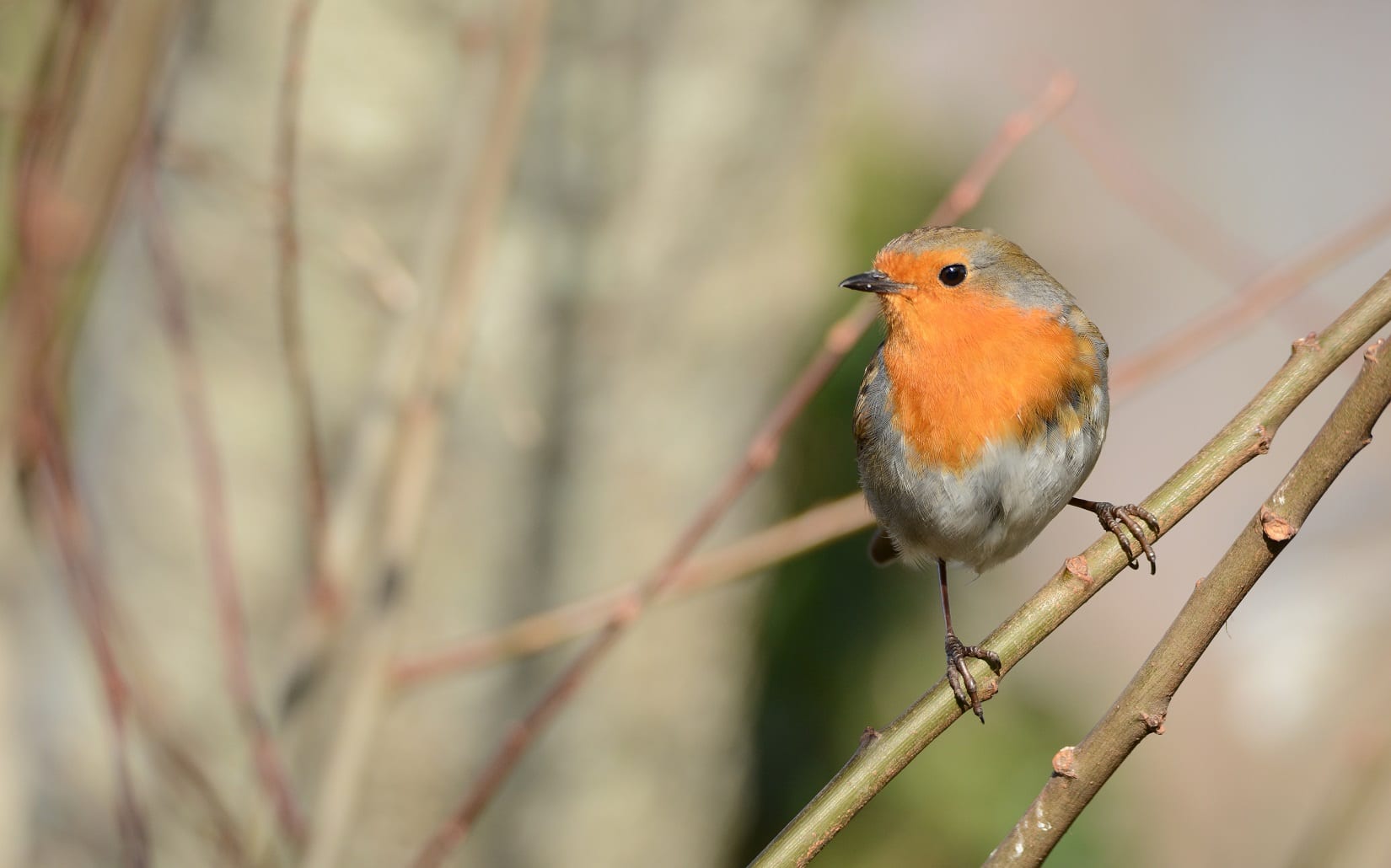
BirdWatch Ireland Calls for Public Participation in Critical Bird Survey Starting November 25th
BirdWatch Ireland is calling on people across the country to help monitor the health of the country’s bird populations by counting the birds visiting their garden over the winter.
Ireland’s longest-running and most popular citizen science survey, the Irish Garden Bird Survey, will commence on Monday, November 25th and run until the end of February. Taking part is free and simple, yet impactful, as all participants contribute to a crucial body of data that will help to inform monitoring and research into bird populations and environmental change.
Last year’s survey, which saw over 1,600 households across the country participating, revealed the Robin as Ireland’s top garden bird once again, present in 96% of gardens. Blackbird and Blue Tit followed in second and third place, occurring in 94% and 91% of gardens respectively. However, all three species appeared in fewer gardens than at any point in the last thirty years due to the mild winter weather conditions, which reduced birds’ need for garden feeders.
Of the top 30 species seen in Irish gardens last winter, 25 occurred in a lower percentage of gardens than the previous winter.






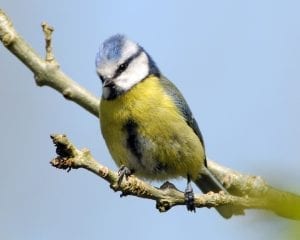
Blue Tit. Photo: Michael Finn.
“We often get emails from people early in the winter wondering where their garden birds are, but last winter people all over the country were commenting on how quiet their gardens were,” said Brian Burke, coordinator of the Irish Garden Bird Survey. “This week we’re seeing very cold conditions across the country, and that’s definitely driving more birds into gardens at the moment, so it’ll be interesting to see what the coming weeks bring. The more people who do the survey, the more we can learn about these sorts of links between climate, birds and our environment.”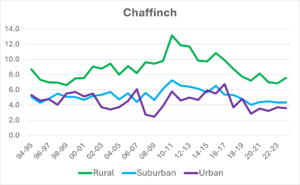
Average Chaffinch numbers per garden show that they occur in greater flock sizes in rural gardens than urban or suburban ones.
Other species including Chaffinch, Coal Tit and Jackdaw were at their lowest occurrence in 30 years, while Song Thrush and Pied Wagtail showed a huge drop of 12% since the previous winter. One species, the Siskin, bucked this trend, occurring in 41% of gardens compared to 26% the previous year. This is largely due to their reliance on alder, birch, spruce and pine tree seeds as a food source. Considering the cyclical nature of seed supply, such peaks in Siskin numbers are expected every three years or so. They tend to occur in relatively few gardens in December, increasing in January, and becoming much more common throughout February. Similar mid-winter increases were seen with Redpoll and Long-tailed Tit, amongst other species.
Long-tailed Tit occurrence in gardens increased greatly after the first week of January (Week 6) and remained high until the end of February.
While it was anticipated that Greenfinch would experience declines due to the impact of the deadly Trichomoniasis condition on the species, it was one of very few species with a stable trend and virtually no change from the previous winter. Greenfinch have occurred in 47-48% of gardens in each of the last three winters, which may indicate that their rapid declines have stabilised. The species is currently on the Amber list as a species of medium-level conservation concern. As usual, there are clear differences in the birds visiting gardens across the country. Notable differences in Ulster include Blackbird being the most widespread species, Goldfinch not featuring in the top 10 (12th), and it being the only province with either Jackdaw or Song Thrush in the top 10. Out west in Connaught, Coal Tit and Wren came in 9th and Starling only in 13th. Leinster was once again the only region to feature Woodpigeon in the top 10. The top 10 in Munster was very similar to the national rankings, though notably, the Rook was the 11th most common species there, much higher than elsewhere. As a conservation charity with a small team, BirdWatch Ireland is reliant on members of the public to help gather vital data about Ireland’s many bird species. In addition to contributing valuable information, participants often enhance their bird identification skills and gain insights into the journeys these birds undertake. Indeed, some of last year’s participants reported ringed birds that visited their gardens including a Goldfinch discovered in Tipperary that was originally ringed in Maine-et-Loire in France, and a Redwing found in Carlow that was ringed at Sandwich Bay Bird Observatory in Kent, England.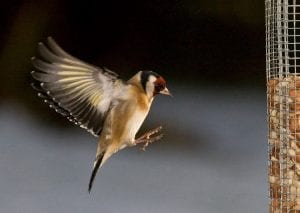
Goldfinch. Photo: Kevin Murphy.
Taking part in the Irish Garden Bird Survey is a win-win for science and for individual participants and this year, BirdWatch Ireland hopes to encourage even more people to take part. All you need to get involved is a little bit of time each week to watch your garden birds, access to a garden or any outdoor space such as a community garden or school grounds, and a sense of curiosity. The Irish Garden Bird Survey is once again sponsored by Ballymaloe, whose support in recent years has helped ensure the survey has gone from strength to strength, improving monitoring at national level and allowing for greater focus on conservation issues facing individual species. Commenting on their ongoing support for the survey, a Ballymaloe spokesperson said: "United in our commitment to the environment and inspired by the legacy of our forefather, Ivan Allen, Ballymaloe businesses as a group proudly sponsor BirdWatch Ireland's annual Irish Garden Bird Survey. Mr Ivan Allen, the husband of Myrtle Allen and a devoted lover of birdlife, cherished the natural habitat around Ballymaloe House, and practised sustainable farming way ahead of his time. In his memory, our collective support for the Irish Bird Survey reflects our ongoing celebration of Mr Allen's passion for birdlife and commitment to conservation. Together Ballymaloe House Hotel, the Ballymaloe Cookery School and Ballymaloe Foods are honoured to contribute towards supporting the preservation of Irish birdlife via BirdWatch Ireland's important national Irish Garden Bird Survey initiative in his name. We encourage as many households as possible to get involved, every entry helps BirdWatch Ireland protect birdlife on the island of Ireland." To learn more about the survey and to get involved, see here: https://birdwatchireland.ie/our-work/surveys-research/research-surveys/irish-garden-bird-survey/.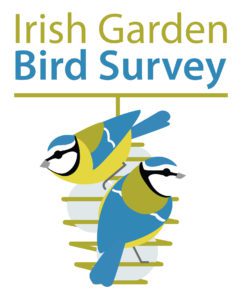

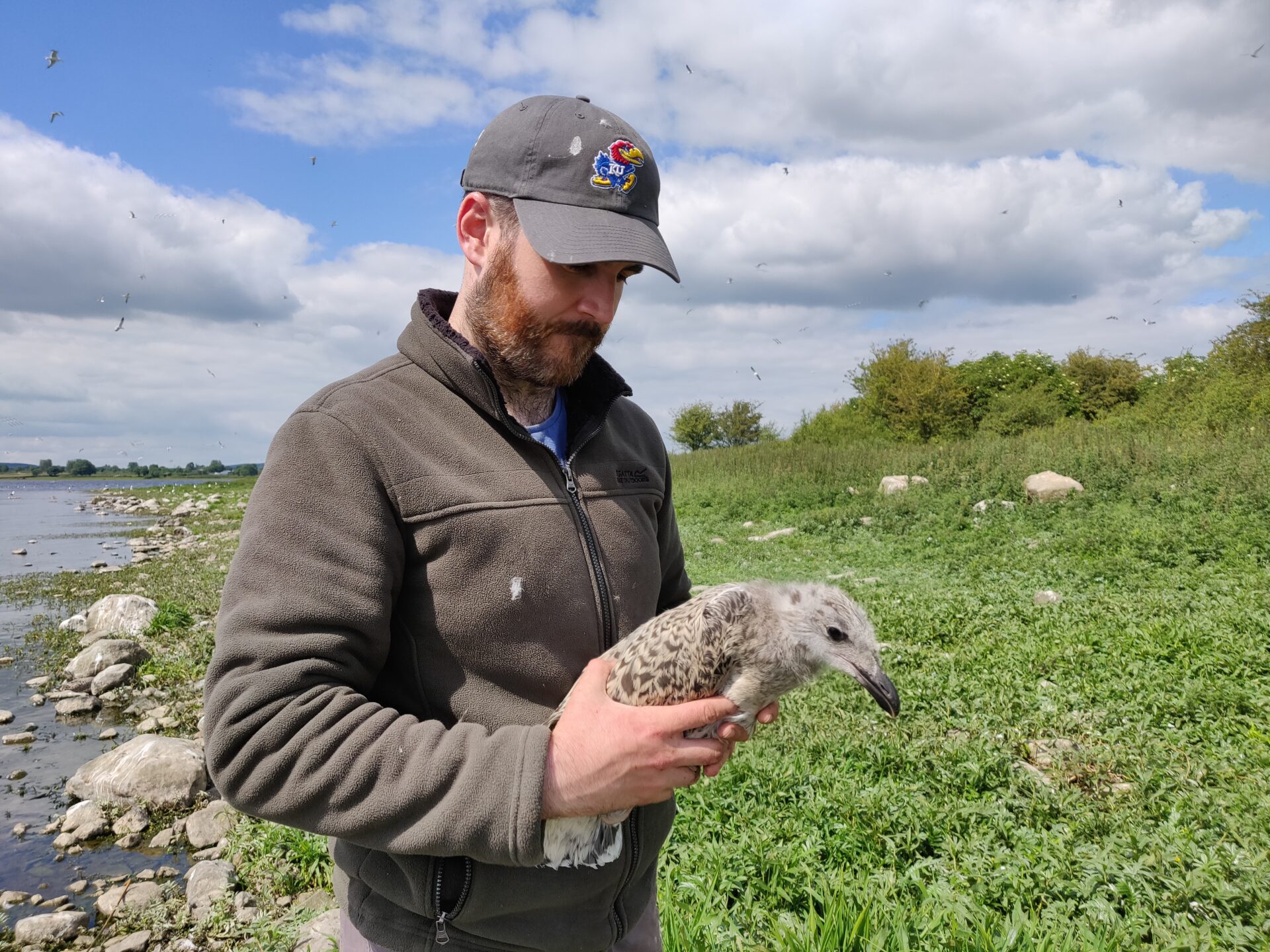
Q & A with Brian Burke - Project Manager of the Little Tern Project in Kilcoole
Marine Policy Officer, Rosalind Skillen, speaks to Little Tern Project Manager, Brian Burke about the The Little Tern Conservation Project in Kilcoole.
This is a National Parks and Wildlife Service project which is managed by Birdwatch Ireland. It is by far the largest Little Tern colony in Ireland, having grown from under fewer than 20 nesting pairs in the 1980s to 274 pairs in 2024.
Can you tell us a bit about Little Terns, the species you work to protect?
Little Terns are fantastic little birds. They weigh around 50g, so around half the size of a Blackbird. Terns were historically known as ‘sea swallows’ as they have a shape similar to a Swallow, with long pointed wings and forked tails, but are white and ‘marine’ in nature like a gull. These tiny little birds migrate to West Africa in the winter, and return to a number of out-of-the-way sand and shingle beaches around the Irish coast to try and raise their young. As seabirds that rely on a diet of fish, they’re excellent ecosystem indicators to give us an idea of what goes on beneath the waves. If Little Terns are doing well and raising young successfully, it must mean that the sea around their colony has enough fish to support them.
 Have you noticed any changes in populations or behaviours over the years?
The biggest change has been the numbers at the Kilcoole colony. We now have by far the biggest colony of Little Terns in Ireland, and one of the biggest in all of Ireland and the UK, and that’s thanks to many years of conservation efforts by the National Parks and Wildlife Service and BirdWatch Ireland. I think it’s a real testament to long-term funding and long-term efforts. Sometimes it can take a few years for your efforts to be rewarded, but when it comes to scarce and declining species, we need to stick with it. We still have occasional bad years at Kilcoole, but importantly we now have many more good years than bad and the Kilcoole and east coast population as a whole are growing.
Have you noticed any changes in populations or behaviours over the years?
The biggest change has been the numbers at the Kilcoole colony. We now have by far the biggest colony of Little Terns in Ireland, and one of the biggest in all of Ireland and the UK, and that’s thanks to many years of conservation efforts by the National Parks and Wildlife Service and BirdWatch Ireland. I think it’s a real testament to long-term funding and long-term efforts. Sometimes it can take a few years for your efforts to be rewarded, but when it comes to scarce and declining species, we need to stick with it. We still have occasional bad years at Kilcoole, but importantly we now have many more good years than bad and the Kilcoole and east coast population as a whole are growing.
 How do you involve the local community at Kilcoole?
The local community in Kilcoole are fantastic every year. They’re always delighted to see the Terns back, and indeed are sometimes concerned towards the end of April when we haven’t got all our fencing up yet! Something as simple as people walking on the beach, and letting dogs off leashes, are some of the biggest threats to Little Terns but everyone at Kilcoole is very happy to steer clear of the nesting area once the terns are back, and that makes a big difference. There’s a real sense of pride in Kilcoole around having these birds pick here to nest, and there’s a ‘Little Tern Playground’ in Kilcoole and one of the schools even has terns on their crest! Ultimately, many conservation problems are people problems rather than ecological problems. We know what most species need to thrive, but we need public buy-in to actually provide it. Thankfully the local community at Kilcoole are incredibly supportive.
How do you involve the local community at Kilcoole?
The local community in Kilcoole are fantastic every year. They’re always delighted to see the Terns back, and indeed are sometimes concerned towards the end of April when we haven’t got all our fencing up yet! Something as simple as people walking on the beach, and letting dogs off leashes, are some of the biggest threats to Little Terns but everyone at Kilcoole is very happy to steer clear of the nesting area once the terns are back, and that makes a big difference. There’s a real sense of pride in Kilcoole around having these birds pick here to nest, and there’s a ‘Little Tern Playground’ in Kilcoole and one of the schools even has terns on their crest! Ultimately, many conservation problems are people problems rather than ecological problems. We know what most species need to thrive, but we need public buy-in to actually provide it. Thankfully the local community at Kilcoole are incredibly supportive.
 What are the biggest threats to Little Terns in Kilcoole?
The biggest threats are predators, and waves. A single fox, or a determined Hooded Crow, Rook or Mink, could do a huge amount of damage in a very short space of time to a colony like this. Unfortunately in recent decades we’ve made the Irish landscape perfect for ‘mesopredators’ like these, and much less suitable for specialist species like the Little Tern. So we try and restore that balance on the beach at Kilcoole to give the Terns a chance. Similarly though, windy days, combined with a high tide can spell disaster for the colony and we’ve had huge amounts of eggs and chicks washed away in a couple of hours. Unfortunately there’s nothing you can do to stop the sea swell when conditions are like that, and with climate change and stormier and more unpredictable weather each summer it's something we’re going to keep seeing in the years ahead.
What are the biggest threats to Little Terns in Kilcoole?
The biggest threats are predators, and waves. A single fox, or a determined Hooded Crow, Rook or Mink, could do a huge amount of damage in a very short space of time to a colony like this. Unfortunately in recent decades we’ve made the Irish landscape perfect for ‘mesopredators’ like these, and much less suitable for specialist species like the Little Tern. So we try and restore that balance on the beach at Kilcoole to give the Terns a chance. Similarly though, windy days, combined with a high tide can spell disaster for the colony and we’ve had huge amounts of eggs and chicks washed away in a couple of hours. Unfortunately there’s nothing you can do to stop the sea swell when conditions are like that, and with climate change and stormier and more unpredictable weather each summer it's something we’re going to keep seeing in the years ahead.
 What can we do to support your work?
I think the Kilcoole Little Tern conservation project is a fantastic example of what can be achieved with long-term funding and continued efforts to address conservation problems and develop expertise over time. Kilcoole wasn’t an immediate success, but over time we’ve worked closely with NPWS to address the issues the birds face and to get to the stage where we have more good years than bad years. I think we need more protected sites, offshore and onshore, and we need to get plans and resources in place to reverse the biodiversity declines that are happening. Monitoring is important too – we need to know what we have, where we have it, and how it’s changing over time. The only way we’ll know if protection and conservation efforts are working is with continued monitoring. And importantly, we need to start now – there’s no time to waste!
[Photos 1-3: Brian Burke; Photo 4 (Ringing Photo): Oonagh Duggan]
The Kilcoole Little Tern Project is an NPWS project run by BirdWatch Ireland under a competitive tender agreement in 2024.
What can we do to support your work?
I think the Kilcoole Little Tern conservation project is a fantastic example of what can be achieved with long-term funding and continued efforts to address conservation problems and develop expertise over time. Kilcoole wasn’t an immediate success, but over time we’ve worked closely with NPWS to address the issues the birds face and to get to the stage where we have more good years than bad years. I think we need more protected sites, offshore and onshore, and we need to get plans and resources in place to reverse the biodiversity declines that are happening. Monitoring is important too – we need to know what we have, where we have it, and how it’s changing over time. The only way we’ll know if protection and conservation efforts are working is with continued monitoring. And importantly, we need to start now – there’s no time to waste!
[Photos 1-3: Brian Burke; Photo 4 (Ringing Photo): Oonagh Duggan]
The Kilcoole Little Tern Project is an NPWS project run by BirdWatch Ireland under a competitive tender agreement in 2024.


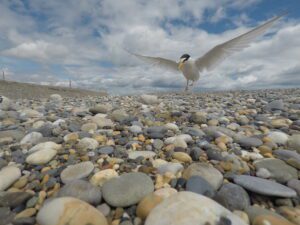 Have you noticed any changes in populations or behaviours over the years?
The biggest change has been the numbers at the Kilcoole colony. We now have by far the biggest colony of Little Terns in Ireland, and one of the biggest in all of Ireland and the UK, and that’s thanks to many years of conservation efforts by the National Parks and Wildlife Service and BirdWatch Ireland. I think it’s a real testament to long-term funding and long-term efforts. Sometimes it can take a few years for your efforts to be rewarded, but when it comes to scarce and declining species, we need to stick with it. We still have occasional bad years at Kilcoole, but importantly we now have many more good years than bad and the Kilcoole and east coast population as a whole are growing.
Have you noticed any changes in populations or behaviours over the years?
The biggest change has been the numbers at the Kilcoole colony. We now have by far the biggest colony of Little Terns in Ireland, and one of the biggest in all of Ireland and the UK, and that’s thanks to many years of conservation efforts by the National Parks and Wildlife Service and BirdWatch Ireland. I think it’s a real testament to long-term funding and long-term efforts. Sometimes it can take a few years for your efforts to be rewarded, but when it comes to scarce and declining species, we need to stick with it. We still have occasional bad years at Kilcoole, but importantly we now have many more good years than bad and the Kilcoole and east coast population as a whole are growing.
 How do you involve the local community at Kilcoole?
The local community in Kilcoole are fantastic every year. They’re always delighted to see the Terns back, and indeed are sometimes concerned towards the end of April when we haven’t got all our fencing up yet! Something as simple as people walking on the beach, and letting dogs off leashes, are some of the biggest threats to Little Terns but everyone at Kilcoole is very happy to steer clear of the nesting area once the terns are back, and that makes a big difference. There’s a real sense of pride in Kilcoole around having these birds pick here to nest, and there’s a ‘Little Tern Playground’ in Kilcoole and one of the schools even has terns on their crest! Ultimately, many conservation problems are people problems rather than ecological problems. We know what most species need to thrive, but we need public buy-in to actually provide it. Thankfully the local community at Kilcoole are incredibly supportive.
How do you involve the local community at Kilcoole?
The local community in Kilcoole are fantastic every year. They’re always delighted to see the Terns back, and indeed are sometimes concerned towards the end of April when we haven’t got all our fencing up yet! Something as simple as people walking on the beach, and letting dogs off leashes, are some of the biggest threats to Little Terns but everyone at Kilcoole is very happy to steer clear of the nesting area once the terns are back, and that makes a big difference. There’s a real sense of pride in Kilcoole around having these birds pick here to nest, and there’s a ‘Little Tern Playground’ in Kilcoole and one of the schools even has terns on their crest! Ultimately, many conservation problems are people problems rather than ecological problems. We know what most species need to thrive, but we need public buy-in to actually provide it. Thankfully the local community at Kilcoole are incredibly supportive.
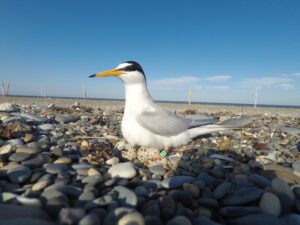 What are the biggest threats to Little Terns in Kilcoole?
The biggest threats are predators, and waves. A single fox, or a determined Hooded Crow, Rook or Mink, could do a huge amount of damage in a very short space of time to a colony like this. Unfortunately in recent decades we’ve made the Irish landscape perfect for ‘mesopredators’ like these, and much less suitable for specialist species like the Little Tern. So we try and restore that balance on the beach at Kilcoole to give the Terns a chance. Similarly though, windy days, combined with a high tide can spell disaster for the colony and we’ve had huge amounts of eggs and chicks washed away in a couple of hours. Unfortunately there’s nothing you can do to stop the sea swell when conditions are like that, and with climate change and stormier and more unpredictable weather each summer it's something we’re going to keep seeing in the years ahead.
What are the biggest threats to Little Terns in Kilcoole?
The biggest threats are predators, and waves. A single fox, or a determined Hooded Crow, Rook or Mink, could do a huge amount of damage in a very short space of time to a colony like this. Unfortunately in recent decades we’ve made the Irish landscape perfect for ‘mesopredators’ like these, and much less suitable for specialist species like the Little Tern. So we try and restore that balance on the beach at Kilcoole to give the Terns a chance. Similarly though, windy days, combined with a high tide can spell disaster for the colony and we’ve had huge amounts of eggs and chicks washed away in a couple of hours. Unfortunately there’s nothing you can do to stop the sea swell when conditions are like that, and with climate change and stormier and more unpredictable weather each summer it's something we’re going to keep seeing in the years ahead.
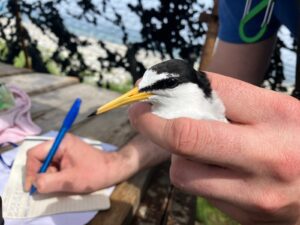 What can we do to support your work?
I think the Kilcoole Little Tern conservation project is a fantastic example of what can be achieved with long-term funding and continued efforts to address conservation problems and develop expertise over time. Kilcoole wasn’t an immediate success, but over time we’ve worked closely with NPWS to address the issues the birds face and to get to the stage where we have more good years than bad years. I think we need more protected sites, offshore and onshore, and we need to get plans and resources in place to reverse the biodiversity declines that are happening. Monitoring is important too – we need to know what we have, where we have it, and how it’s changing over time. The only way we’ll know if protection and conservation efforts are working is with continued monitoring. And importantly, we need to start now – there’s no time to waste!
[Photos 1-3: Brian Burke; Photo 4 (Ringing Photo): Oonagh Duggan]
The Kilcoole Little Tern Project is an NPWS project run by BirdWatch Ireland under a competitive tender agreement in 2024.
What can we do to support your work?
I think the Kilcoole Little Tern conservation project is a fantastic example of what can be achieved with long-term funding and continued efforts to address conservation problems and develop expertise over time. Kilcoole wasn’t an immediate success, but over time we’ve worked closely with NPWS to address the issues the birds face and to get to the stage where we have more good years than bad years. I think we need more protected sites, offshore and onshore, and we need to get plans and resources in place to reverse the biodiversity declines that are happening. Monitoring is important too – we need to know what we have, where we have it, and how it’s changing over time. The only way we’ll know if protection and conservation efforts are working is with continued monitoring. And importantly, we need to start now – there’s no time to waste!
[Photos 1-3: Brian Burke; Photo 4 (Ringing Photo): Oonagh Duggan]
The Kilcoole Little Tern Project is an NPWS project run by BirdWatch Ireland under a competitive tender agreement in 2024.

